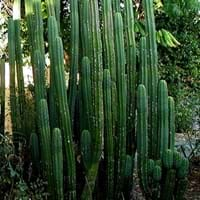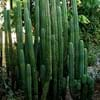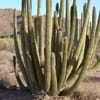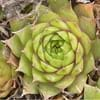Life Span
Perennial
Perennial
Origin
North America, Latin America and the Caribbean, Central America, South America
China
Types
Not Available
Greenstripe Vivax, Moso, Weavers Bamboo, Oldhamii
Habitat
low mountains
Subtropical climates, Wet Woods
USDA Hardiness Zone
8-10
8-12
AHS Heat Zone
Not Available
12 - 7
Sunset Zone
Not Available
H1, H2, 8, 9, 14, 15, 16, 17, 18, 19, 20, 21, 22, 23, 24
Habit
Not Available
Clump-Forming
Minimum Height
Not Available
Flower Color
White
Pale White
Flower Color Modifier
Not Available
Bicolor
Fruit Color
Not Available
Not Available
Leaf Color in Spring
Not Available
Green
Leaf Color in Summer
Not Available
Light Green
Leaf Color in Fall
Not Available
Green
Leaf Color in Winter
Not Available
Green
Leaf Shape
Succulent
Acicular
Plant Season
Not Available
Spring, Summer, Fall, Winter
Sunlight
Full Sun
Full Sun, Partial Sun
Growth Rate
Not Available
Very Fast
Type of Soil
Loam, Sand
Loam, Sand
The pH of Soil
Acidic, Neutral, Alkaline
Acidic, Neutral, Alkaline
Soil Drainage
Well drained
Well drained
Bloom Time
Not Available
Not Available
Tolerances
Drought
Drought
Where to Plant?
Container, Ground
Container, Ground
How to Plant?
Seedlings
Grafting, Seedlings, Stem Planting, Transplanting
Plant Maintenance
Medium
Medium
Watering Requirements
Needs very little water
Needs watering once a week, Use Mulches to help prevent water loss during hot and windy weather, Water Deeply
In Summer
Lots of watering
Lots of watering
In Spring
Moderate
Moderate
In Winter
Average Water
Average Water
Soil pH
Acidic, Neutral, Alkaline
Acidic, Neutral, Alkaline
Soil Type
Loam, Sand
Loam, Sand
Soil Drainage Capacity
Well drained
Well drained
Sun Exposure
Full Sun
Full Sun, Partial Sun, Partial shade
Pruning
Remove damaged leaves, Remove dead branches, Remove dead leaves
Do not prune during shooting season, Prune in late summer or fall, Remove damaged leaves
Fertilizers
All-Purpose Liquid Fertilizer
All-Purpose Liquid Fertilizer
Pests and Diseases
Bacterial soft rot, bees, Fungal Diseases, Mealy bugs, Scale, Spider mites
Black sooty mold, Mealybugs, Mosaic viruses, Powdery mildew, pythogens, Stem rot
Plant Tolerance
Drought
Drought
Flower Petal Number
Not Available
Single
Showy Fruit
Not Available
No
Edible Fruit
Not Available
No
Foliage Texture
Bold
Coarse
Foliage Sheen
Not Available
Matte
Attracts
Insects
Beetles, Bugs, Mites
Allergy
Not Available
allergic conjunctivitis, Asthma, Rash, Respiratory distress
Aesthetic Uses
Beautification, Showy Purposes
Showy Purposes
Beauty Benefits
Removes dandruff, Skin inflammation, Skin Problems
Not Available
Environmental Uses
Air purification
Agroforestry, Air purification, No fertilizer, pesticides, or herbicides needed
Medicinal Uses
antimicrobial, Cardiac, High blood pressure, Wounds
Aging, Anti-fungal, Antispasmodic, Digestive disorders, Obesity
Part of Plant Used
Flowers, Stem
Stem, Tree trunks
Other Uses
Traditional medicine, Used as Ornamental plant
Economic Purpose, Traditional medicine, Used As Food, Used for woodware, Used in Furniture, Used in paper industry
Used As Indoor Plant
No
No
Used As Outdoor Plant
Yes
Yes
Garden Design
Container, Houseplant, Rock Garden, Wall
Feature Plant, Screening / Wind Break, Tropical
Botanical Name
Trichocereus pachanoi
BAMBUSA beecheyana
Common Name
Trichocereus
Beechey's Bamboo, Clumping Bamboo
In Hindi
Trichocereus
बांस
In German
Trichocereus
Verklumpung Bambus
In French
Trichocereus
clumping Bamboo
In Spanish
Trichocereus
clumping Bamboo
In Greek
Trichocereus
συσσώρευση μπαμπού
In Portuguese
Trichocereus
bambu aglutinação
In Polish
Trichocereus
zbicie bambus
In Latin
Trichocereus
clumping Bamboo
Phylum
Magnoliophyta
Magnoliophyta
Class
Magnoliopsida
Liliopsida
Order
Caryophyllales
Cyperales
Clade
Angiosperms, Core eudicots, Eudicots
Angiosperms, Commelinids, Monocots
Tribe
Trichocereeae
Bambuseae
Subfamily
Cactoideae
Bambusoideae
Number of Species
Not Available
Importance of Trichocereus and Clumping Bamboo
Want to have the most appropriate plant for your garden? You might want to know the importance of Trichocereus and Clumping Bamboo. Basically, these two plants vary in many aspects. Compare Trichocereus and Clumping Bamboo as they differ in many characteristics such as their life, care, benefits, facts, etc. Every gardener must at least have the slightest clue about the plants he wants to plant in his garden. Compare their benefits, which differ in many ways like facts and uses. The medicinal use of Trichocereus is antimicrobial, Cardiac, High blood pressure and Wounds whereas of Clumping Bamboo is Aging, Anti-fungal, Antispasmodic, Digestive disorders and Obesity. Trichocereus has beauty benefits as follows: Removes dandruff, Skin inflammation and Skin Problems while Clumping Bamboo has beauty benefits as follows: Removes dandruff, Skin inflammation and Skin Problems.
Compare Facts of Trichocereus vs Clumping Bamboo
How to choose the best garden plant for your garden depending upon its facts? Here garden plant comparison will help you to solve this query. Compare the facts of Trichocereus vs Clumping Bamboo and know which one to choose. As garden plants have benefits and other uses, allergy is also a major drawback of plants for some people. Allergic reactions of Trichocereus are Not Available whereas of Clumping Bamboo have allergic conjunctivitis, Asthma, Rash and Respiratory distress respectively. Having a fruit bearing plant in your garden can be a plus point of your garden. Trichocereus has no showy fruits and Clumping Bamboo has no showy fruits. Also Trichocereus is not flowering and Clumping Bamboo is not flowering . You can compare Trichocereus and Clumping Bamboo facts and facts of other plants too.





